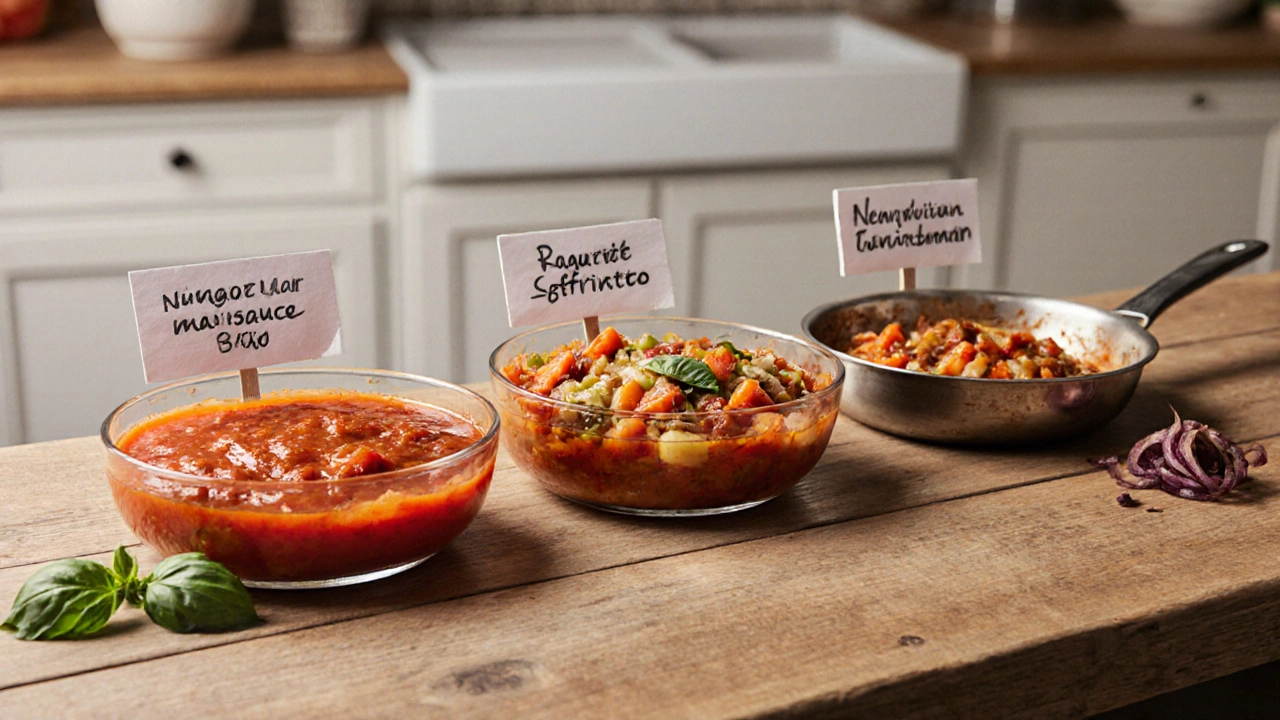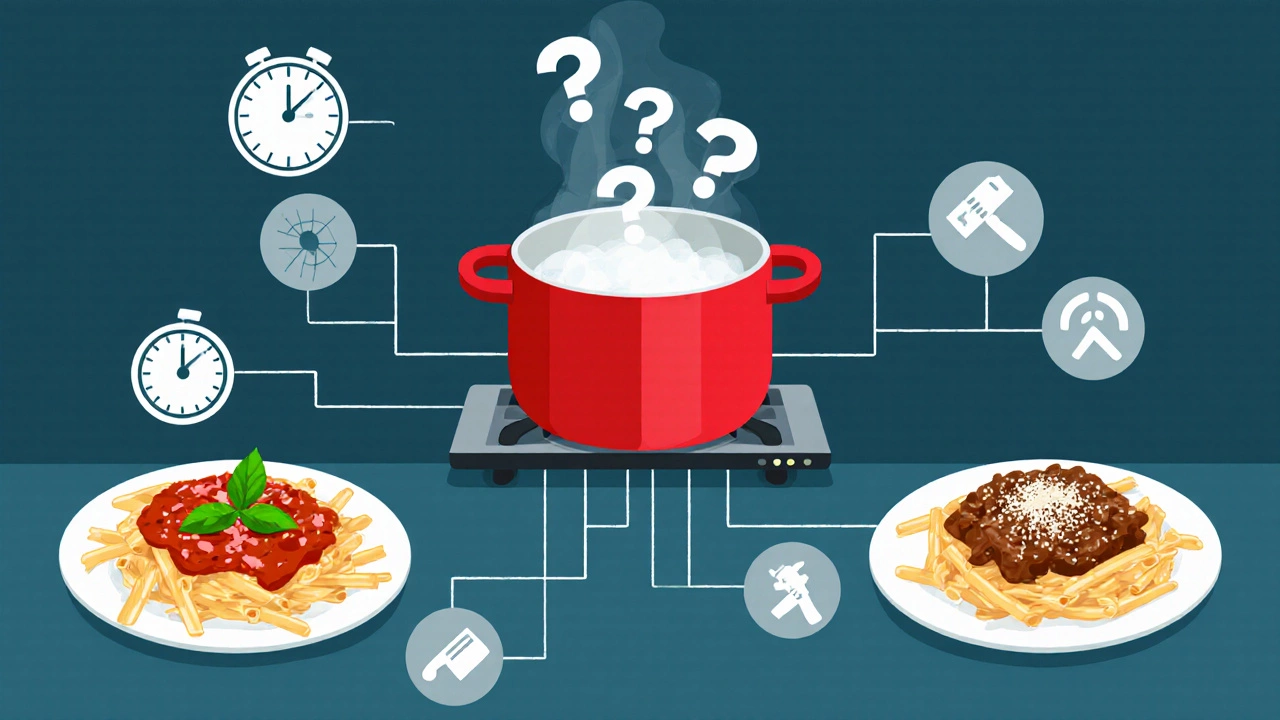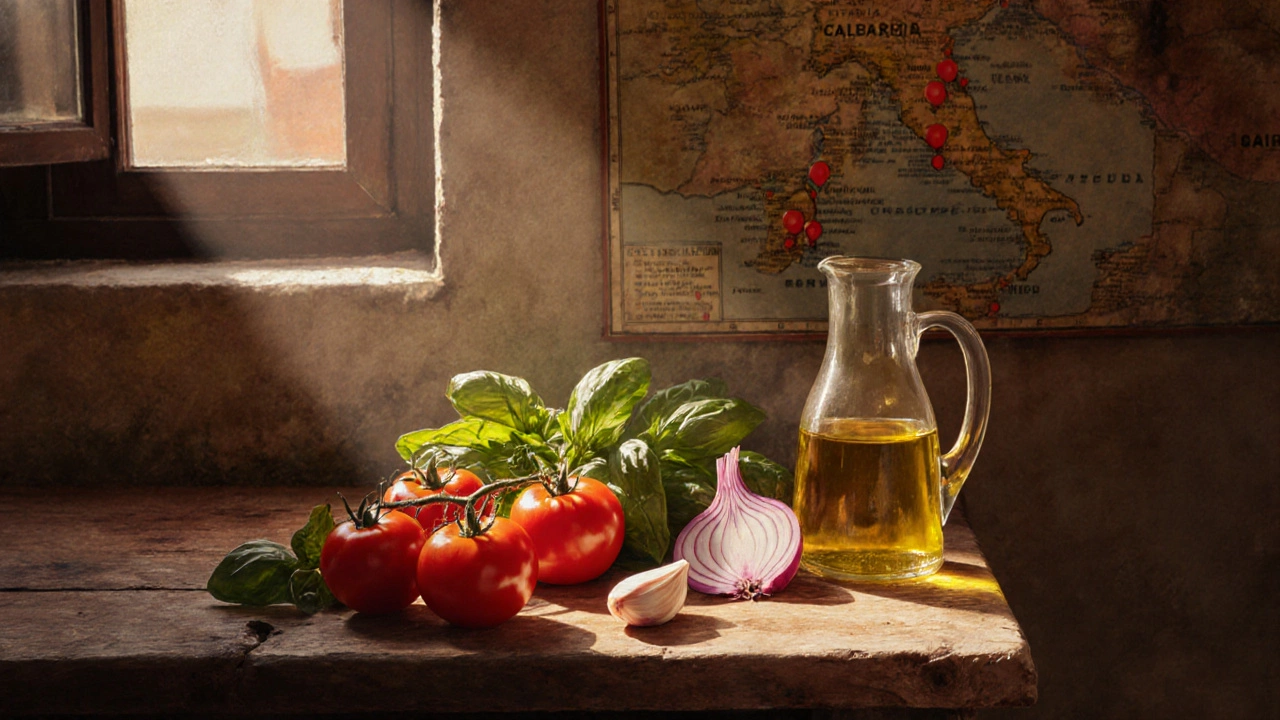When you wonder onions in Italian sauce, the answer isn’t a simple yes or no. It changes with region, dish, and family tradition. This guide breaks down when Italians really reach for an onion, why they might skip it, and how you can decide what works best in your own kitchen.
Quick Takeaways
- Onions appear in many classic Italian sauces, especially in the south and in meat‑based sauces.
- Western‑style "marinara" often skips onion, focusing on tomato, garlic, and herbs.
- Regional variations (e.g., Naples vs. Bologna) dictate the onion’s role.
- If you’re cooking for purists, follow traditional regional recipes; otherwise feel free to adjust.
- Use the checklist below to match sauce type with onion usage.
What Is “Italian Tomato Sauce”?
Italian tomato sauce is a foundational sauce built from tomatoes, olive oil, and aromatics that serves as the base for countless pasta dishes across Italy. It isn’t a single recipe; it morphs depending on geography, season, and the cook’s personal history.
Core Aromatics That Shape the Sauce
Before we decide about onions, let’s list the other flavor pillars.
- Garlic adds pungent warmth and is almost always present
- Olive oil provides richness and carries the aromatics
- Basil offers fresh, sweet notes, especially in summer sauces
- Oregano gives an earthy, slightly bitter edge, common in meat sauces
The Onion Question: Historical Roots
Onion has been cultivated in Italy since Roman times. In the countryside, onions were cheap, plentiful, and stored well through winter, making them a logical starter for hearty sauces.
However, the way onions are used differs:
- Southern Italy (Naples, Calabria, Sicily): onions are often sautéed with garlic before adding tomatoes, creating a soft, sweet base.
- Central Italy (Rome, Lazio): many families prefer a lighter sauce, relying mostly on garlic and fresh herbs, reserving onions for meat dishes.
- Northern Italy (Milan, Piedmont): butter and cream dominate many sauces, and onions may be omitted entirely in simple tomato‑only preparations.

When Onions Show Up: Classic Sauce Types
Here’s a snapshot of the most common sauces and whether onions typically appear.
| Sauce | Typical Onion Use | Region Where Common | Key Flavor Goal |
|---|---|---|---|
| Marinara | Usually none (optional) | South‑west coast | Bright, tomato‑forward |
| Ragù | Finely diced, sautéed | Emilia‑Romagna, Bologna | Deep, meaty, umami |
| Bolognese | Caramelized onions & carrots & celery (soffritto) | Emilia‑Romagna | Rich, slow‑cooked |
| Neapolitan tomato sauce | Sautéed onion & garlic | Campania (Naples) | Sweet‑soft base |
| Puttanesca | Usually none; relies on olives, capers | Southern Lazio | Salty, briny, spicy |
Why Some Italians Skip the Onion
Even in regions where onions are traditional, many cooks omit them for a few reasons:
- Flavor Purity: A clean tomato‑only sauce lets the fruit’s acidity shine, especially with high‑quality San Marzano tomatoes.
- Texture Preference: Some diners dislike the soft, sometimes mushy texture onions can add.
- Speed: Skipping the onion reduces prep time; you can toss garlic straight into hot oil and add tomatoes.
- Health Concerns: Onions can cause digestive discomfort for some; a garlic‑only version is gentler.
How to Decide for Your Own Pasta Dish
Use this quick decision tree before you start cooking:
- Is the sauce meat‑based (ragù, Bolognese)? -Yes: include a finely diced onion as part of soffritto.
- Is the sauce meant to be light and bright (simple marinara, aglio‑olio tomato)? -Yes: skip the onion, rely on garlic and fresh herbs.
- Are you cooking a regional specialty (Neapolitan, Sicilian caponata‑style sauce)? -Check a trusted local recipe; most include onion.
- Do you have a limited time window (30‑minute weeknight dinner)? -Skip onion for speed.
Flavor Hacks: Adding Onion Without Overpowering
If you love onion but fear it will dominate, try these tricks:
- Caramelize slowly: Cook the onion on low heat for 15‑20 minutes until golden. The sugars mellow, giving a subtle sweetness.
- Use shallots instead of regular onions; their milder, slightly fruity profile blends nicely with tomatoes.
- Blend half of the sautéed onion into the sauce with an immersion blender for a smooth texture.

Sample Recipes: With and Without Onion
Below are two quick recipes that illustrate the difference.
Classic Neapolitan Tomato Sauce (with onion)
- Heat 3tbsp olive oil in a saucepan.
- Add 1 medium onion, finely chopped, and 2 minced garlic cloves. Sauté 5min until soft.
- Stir in 800g crushed San Marzano tomatoes, a handful of fresh basil, and a pinch of oregano. Simmer 20‑30min.
- Season with salt, pepper, and a drizzle of extra‑virgin olive oil. Toss with al dente spaghetti.
Simple Garlic‑Tomato Marinara (no onion)
- Heat 2tbsp olive oil over medium heat.
- Add 3 minced garlic cloves; cook 30seconds.
- Pour in 700g diced tomatoes (canned or fresh), add a pinch of basil, and simmer 15min.
- Finish with salt, pepper, and a splash of red wine if desired. Serve over linguine.
Common Pitfalls and How to Avoid Them
- Burnt onions: Cook low and stir; burnt bits add bitterness.
- Over‑cooking garlic: Add garlic after the onion has softened; it only needs a quick sizzle.
- Too watery sauce: Use quality canned tomatoes and let the sauce reduce; onions release water.
- Missing regional authenticity: When replicating a regional dish, follow local recipes for the correct aromatic mix.
Checklist: Does Your Sauce Need Onions?
- Is the sauce meat‑heavy? - Yes → include onions.
- Are you aiming for a light summer sauce? - No onions, more fresh herbs.
- Do you have high‑quality canned tomatoes? - You can skip onions and let the tomato shine.
- Is the dish traditional to a specific region? - Look up that region’s classic recipe.
Frequently Asked Questions
Do all Italian families use onions in their pasta sauce?
No. Some families, especially in the north, prefer a simple tomato‑garlic base, while many southern households start with onions for a sweeter foundation.
Can I substitute shallots for onions?
Absolutely. Shallots have a milder flavor and work well in delicate sauces where you don’t want the onion’s bite.
What’s the difference between marinara and ragù?
Marinara is a quick, tomato‑garlic sauce, usually onion‑free. Ragù is a slow‑cooked meat sauce that traditionally includes a soffritto of onions, carrots, and celery.
If I forget the onion, is my sauce ruined?
Not at all. You can still achieve a delicious sauce by emphasizing garlic, herbs, and a good quality tomato. Add a pinch of sugar to mimic the natural sweetness onions would give.
How long should I sauté onions for a sauce?
Cook them on medium‑low heat for 5‑7minutes until translucent for a subtle flavor, or 15‑20minutes for a deep, caramelized sweetness.

